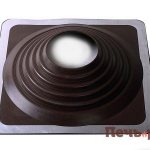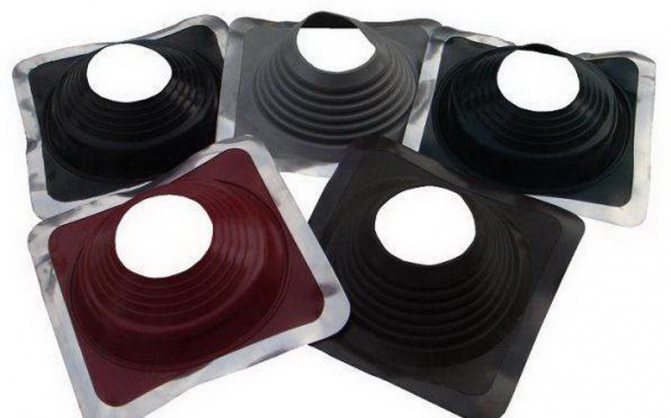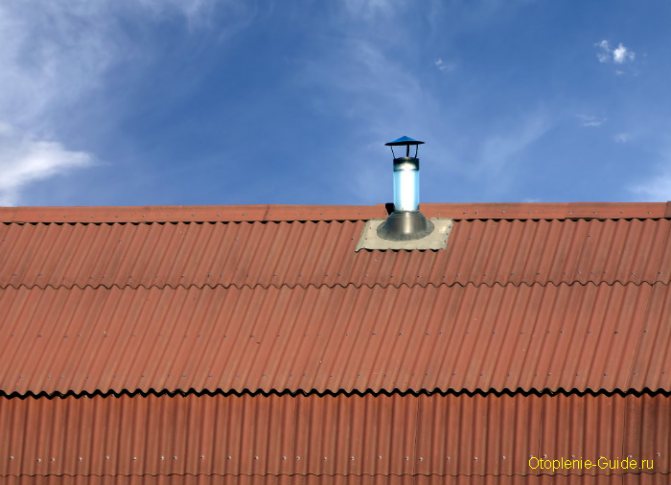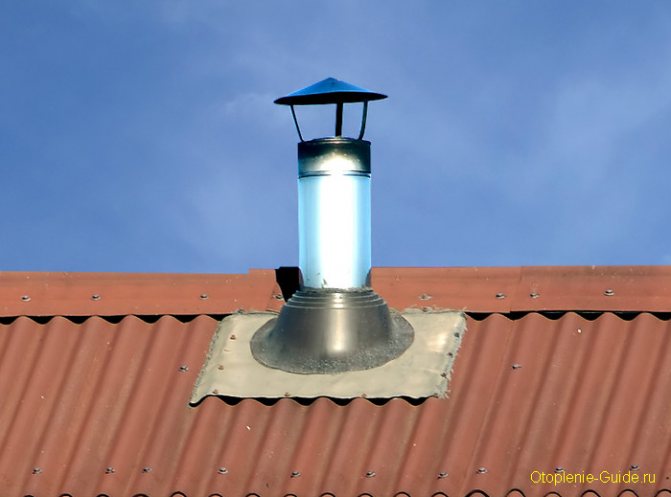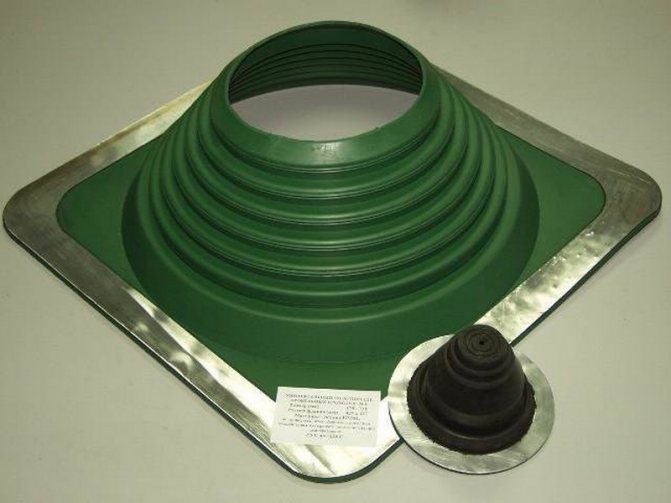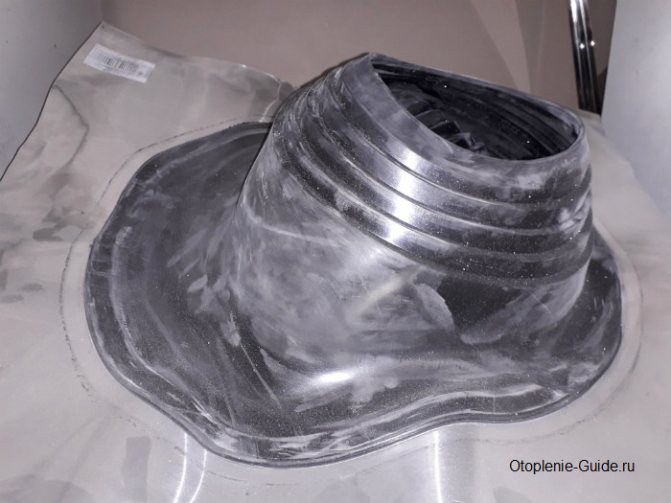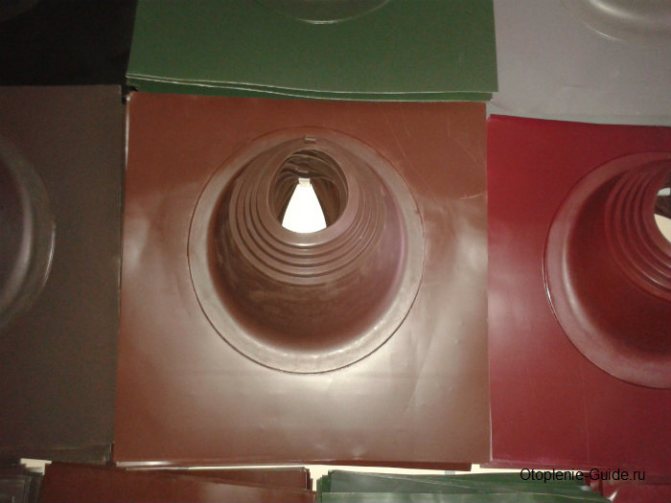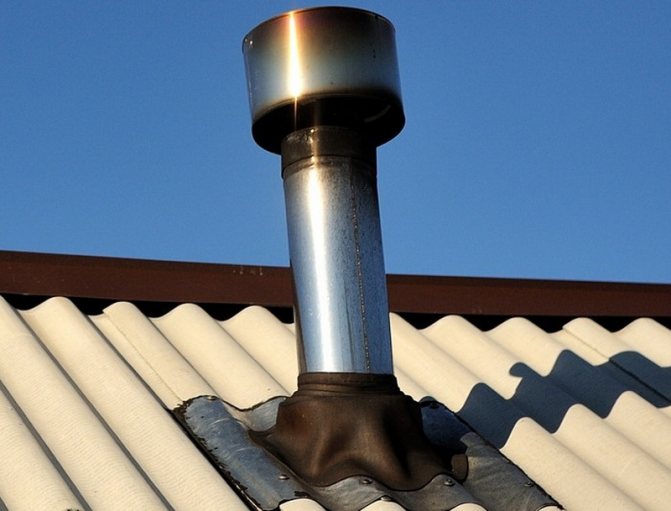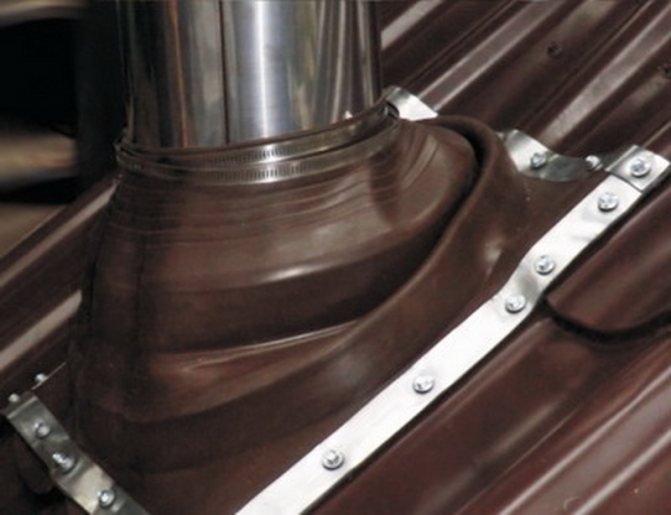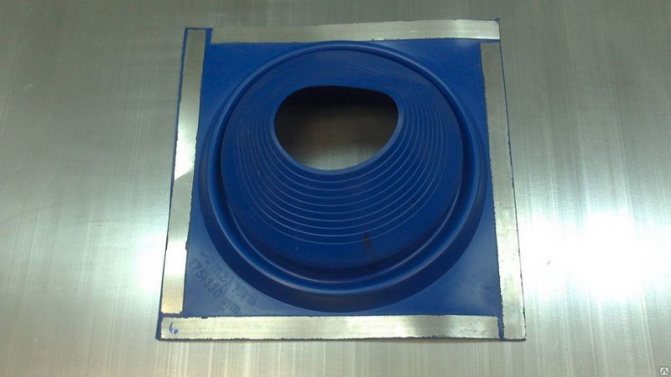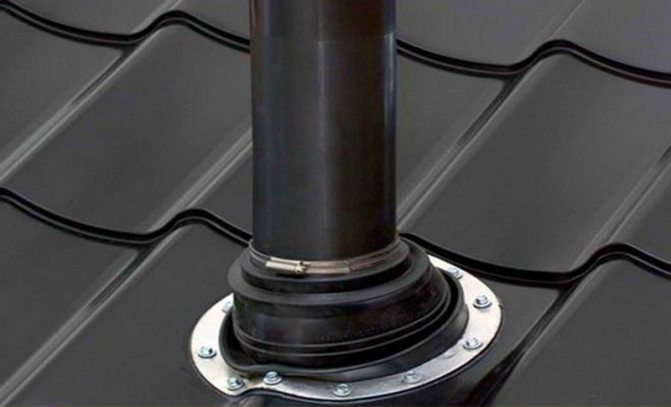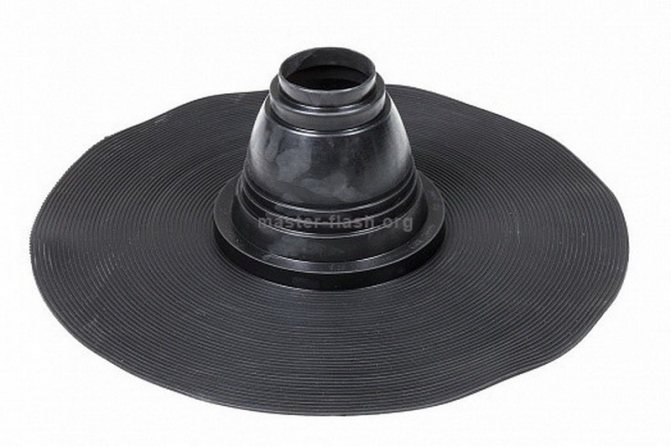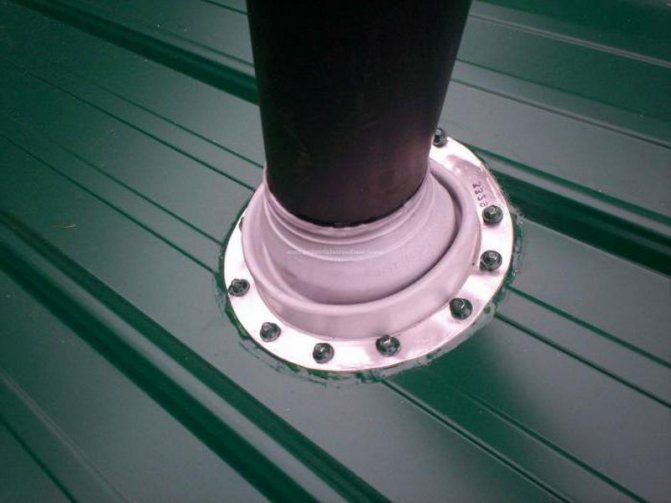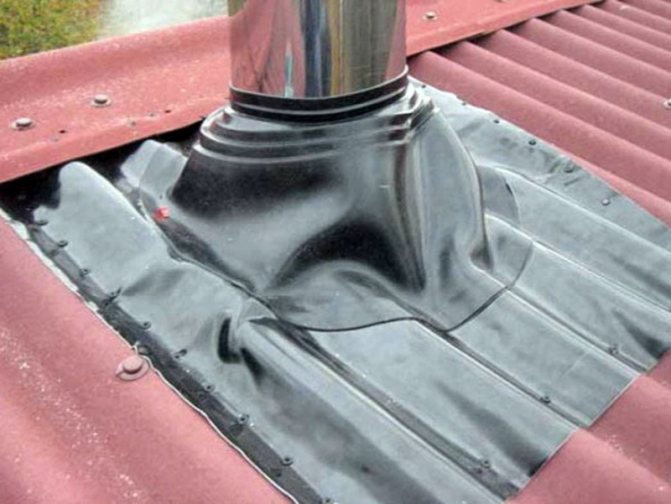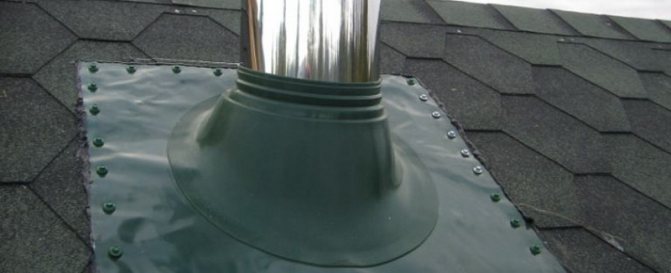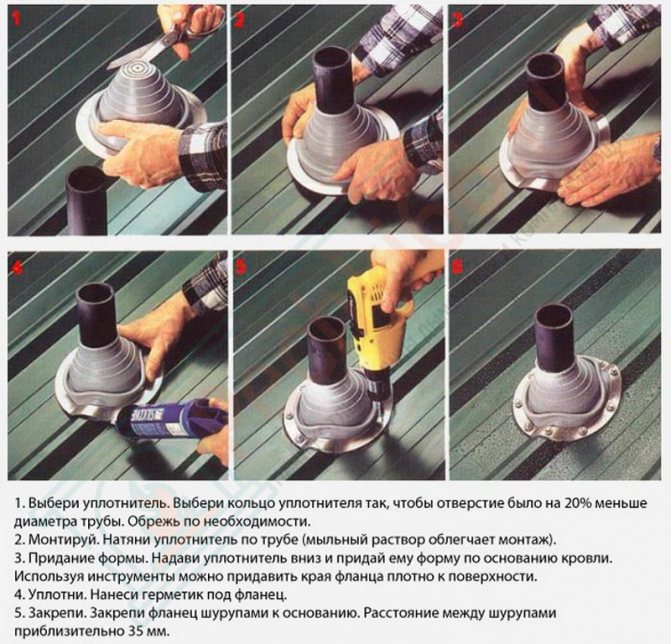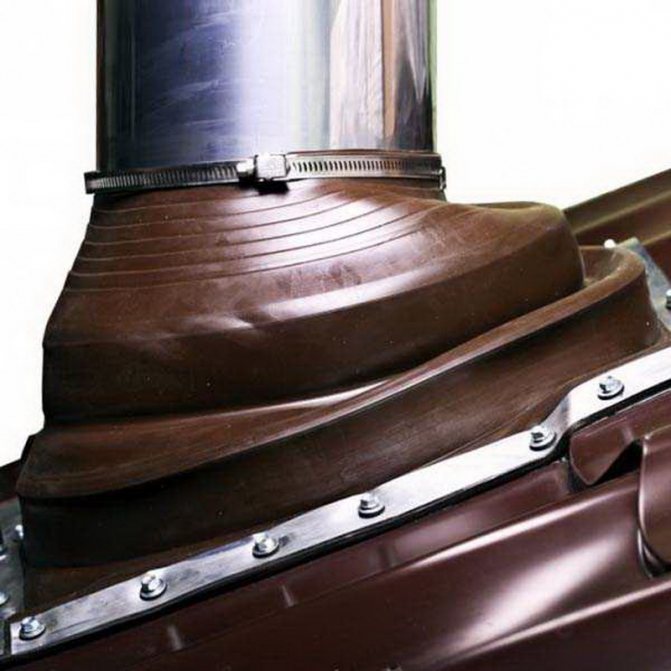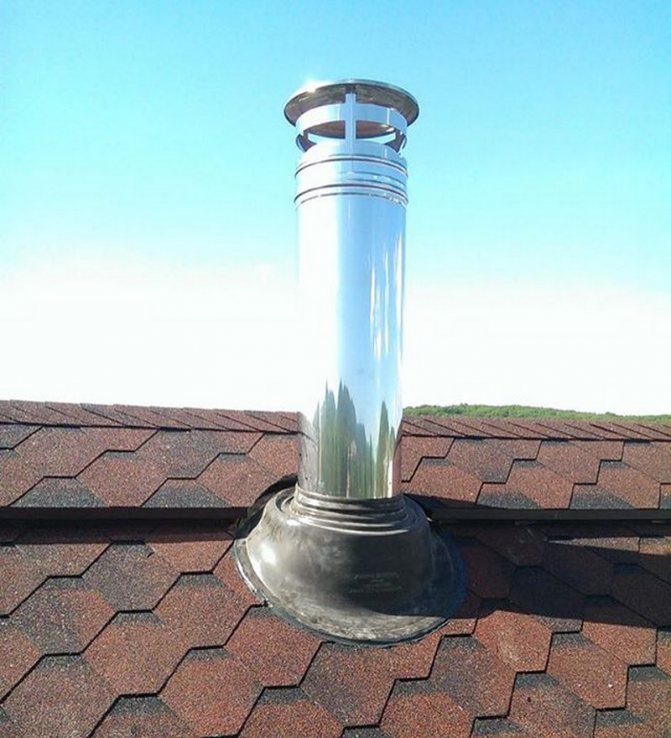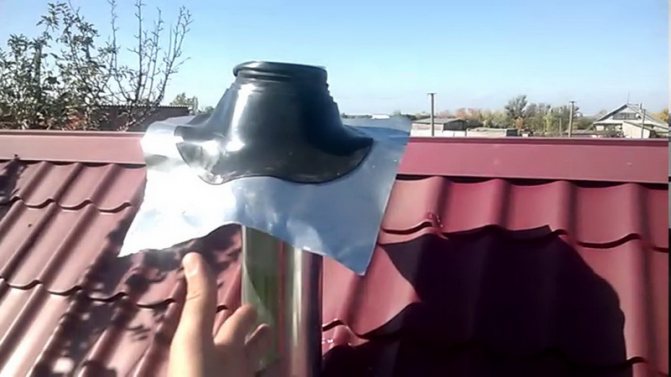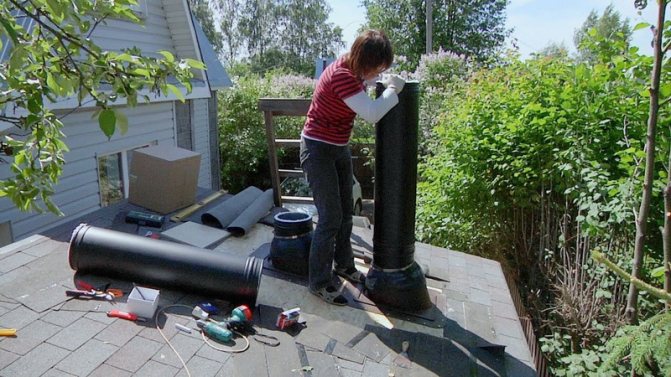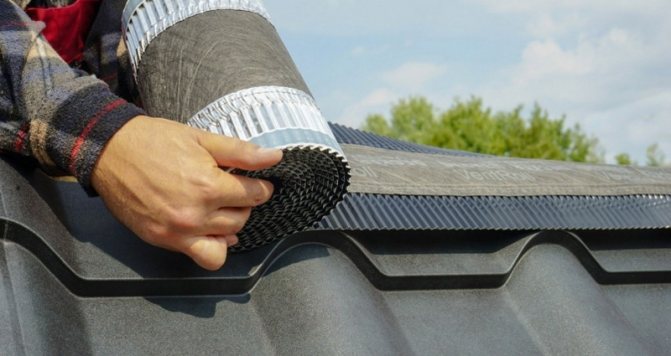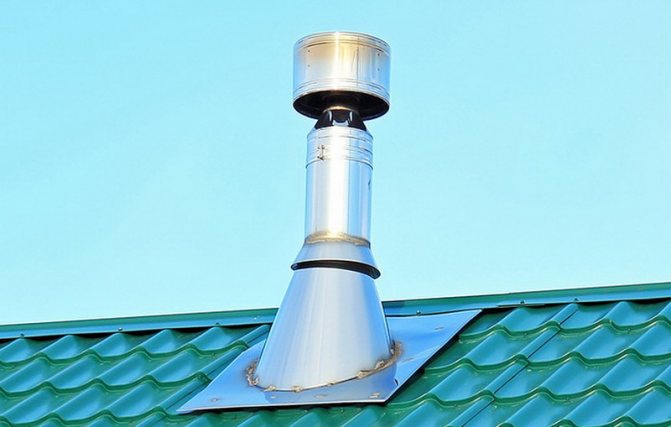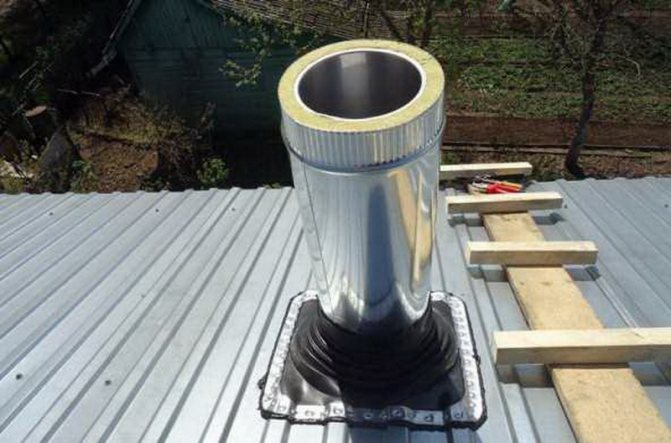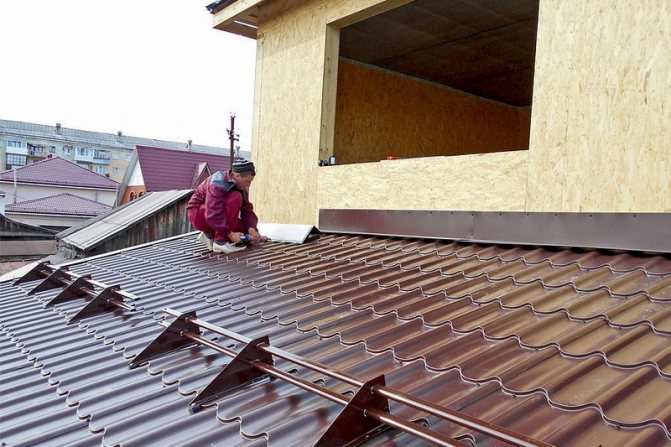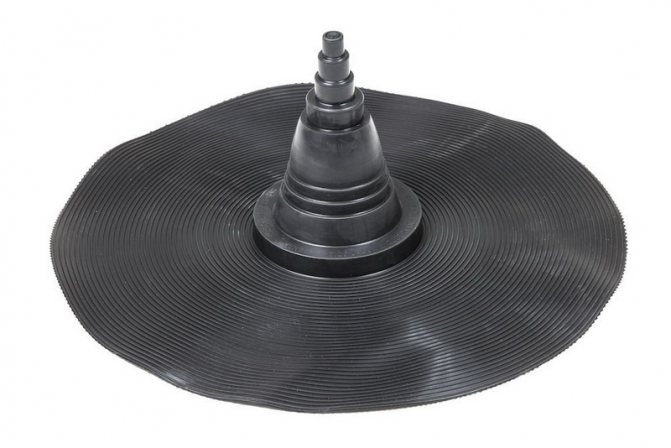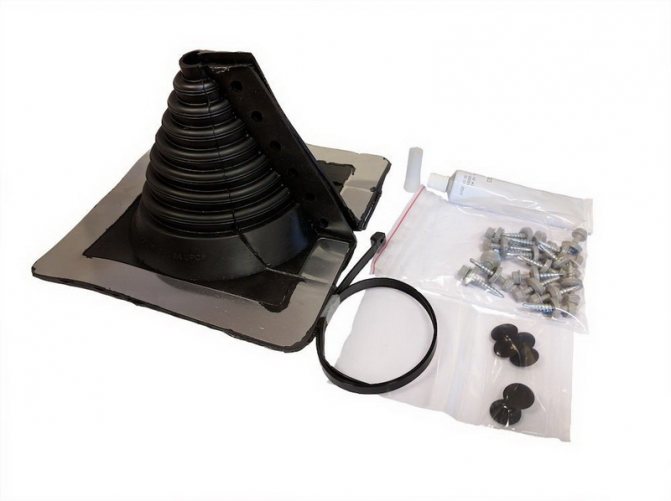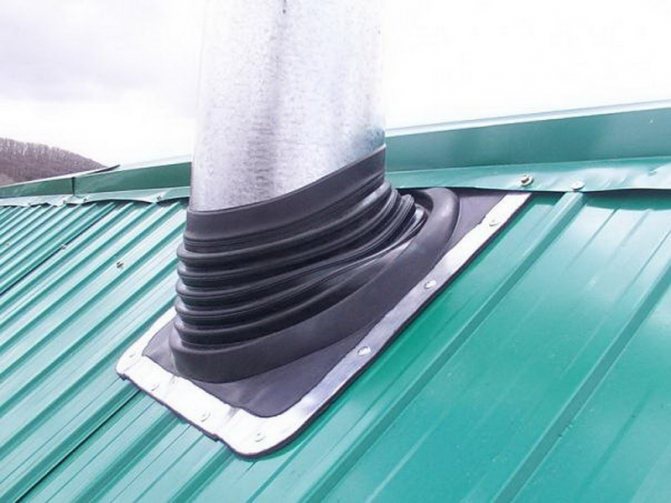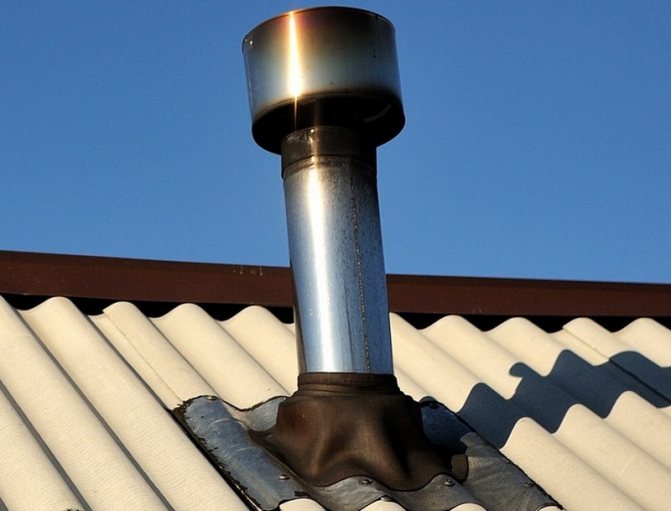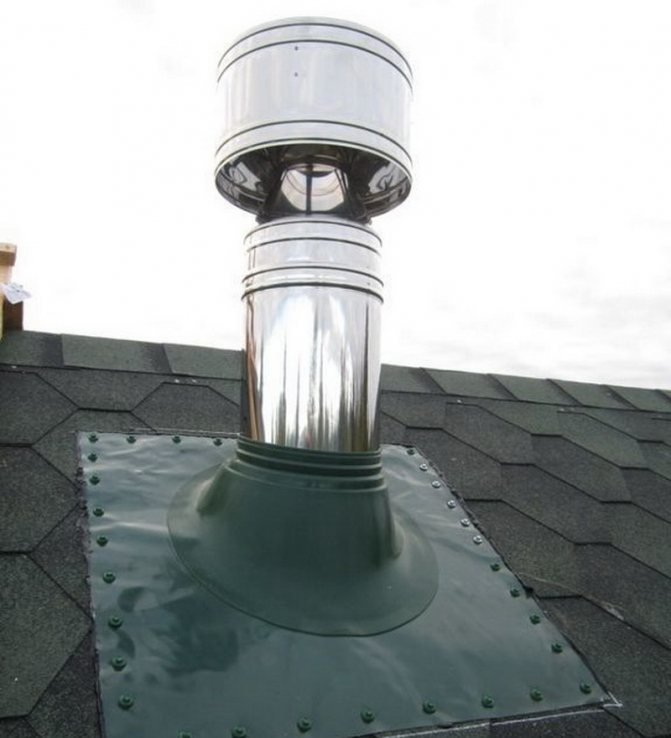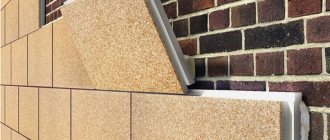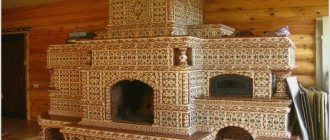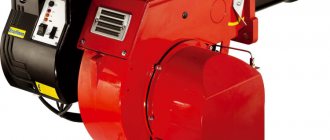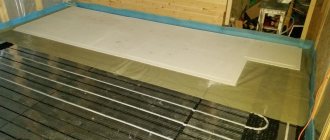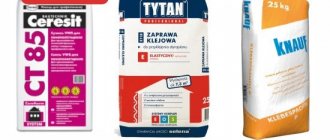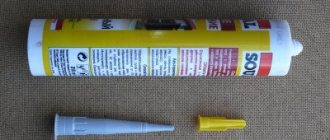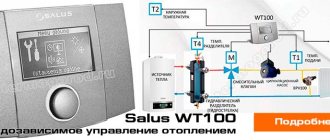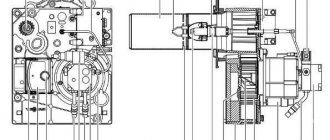One of the most difficult nodes is the passage of the chimney through the roofing system. It is necessary to create a high tightness, as well as eliminate the possibility of fire. In order for the goal to be achieved, many actions were taken at one time, and only professional roofers took up the matter. If problem areas were found, they were filled with asbestos, roofing material and tin were fixed, and they also used a cement solution. Despite the difficult process, all this did not last long, since no one canceled the temperature and atmospheric effects. To significantly facilitate the work and extend the service life, we have created the roofing Master Flash. It will allow you to abandon complex and lengthy procedures. Master Flash will provide protection from precipitation, while spending less effort, time and money.
What is Master Flash?
Master Flush is a kind of high elasticity sealing cuff. They are used to seal the intersections of the pipe and roof. Various materials are used for manufacturing.
It should be noted that this device is not used as a seal for chimneys without insulation.
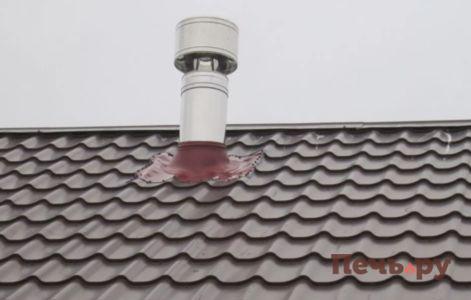
The main advantages of Master Flash:
- Tight fit to the pipe walls due to its elasticity.
- Withstands temperature extremes.
- Corrosion is not terrible.
- High sealing due to low porosity.
- Returns to its shape after expansion from heat.
- High fire resistance.
- Long-term guarantee.
- Installation without special tools.
- It can be installed in any weather conditions.
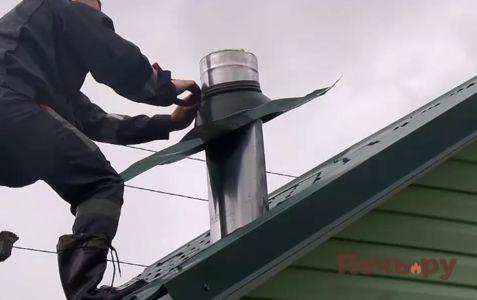

The main advantage is the reduction in the consumption of materials in this process. No additional waterproofing required.
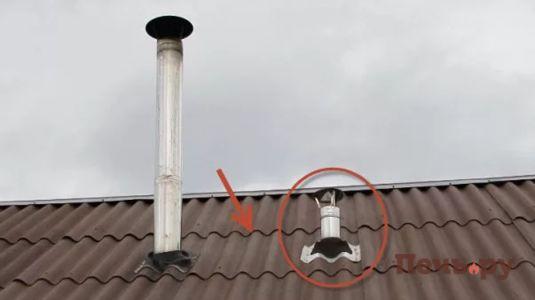

Differences between seals
Roof seals have become a replacement for pipe aprons. They are similar in design to their predecessors, but have some differences:
- Made of rubber, usually silicone, in the form of a tapering cone with a flexible cuff. With the help of it, a tight connection of the pipe to the roof is ensured. In addition, it protects against moisture and dust. The top of the cone follows the shape of the pipe. Bottom connects to the seal.
- Flange - base. Made from various materials. Rubberized or silicone base for roof mounting with massive ribs, with aluminum strips. It allows the flange to take the shape of the profile.
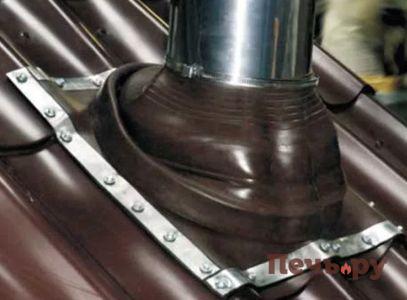

Insulation cuffs for a flat roof are located at a slight angle. Cone-shaped element with corrugations, which forms the contours of oval holes with gradation in diameter. That is, you can change the angle by tilting it at certain intervals. Sometimes it happens that the axis is perpendicular to the base, then the sealant is used for a flat roof.


How to mount?
Flexible seals were able to outstrip their outdated counterparts in many respects. They are able to withstand various temperature ranges, practically do not need to be repaired, and have a long service life. They are unpretentious in installation. You don't need to have any special skills to install. The top of the seal is sheared off to create a narrow hole. Then, the cone is put on the chimney. You need to move it down to the very base. In order for the process to proceed quickly, it is better to soap or moisten the surface of the pipe.
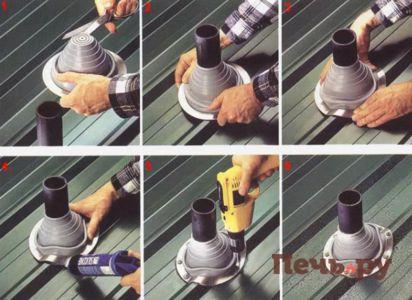

The method of flange fastening depends on the roof material:
- Silicone glue or bitumen mastic is applied to a flat roll coated surface.
- If there is a slope, then the entrance is self-tapping.
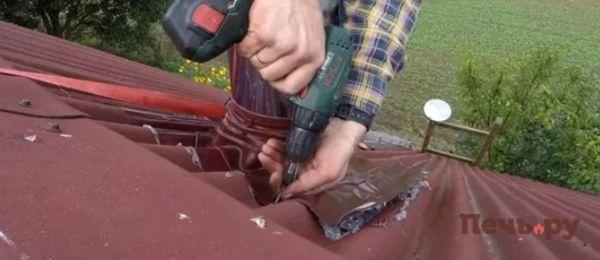

After installation, the bottom of the flange and the cut of the cone are lubricated with silicone sealant to ensure greater reliability. Sometimes a clamp is used for the top edge. Despite the strength of the fixation, the master flash will be movable. For example, if thermal expansion occurs, the master flash will not lose its tightness. Also, the cuff will behave if shrinkage occurs at home.
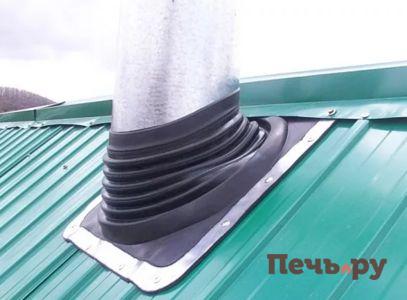

How does a rat work
The chimney passage assembly must be airtight and resistant to atmospheric influences, withstand the high temperature of the chimney, be reliable and durable.
The temperature range of the boiler affects the protective roof assembly.
In the photo, the Master Flash for the chimney looks like a pyramidal structure made of rings of various diameters and fastened with a flexible square or rectangular base.
The design is universal, since each of the circles of the pyramid corresponds to a chimney of a given size.
The angle of attachment of the rings is different and resembles a cone. Separate canopies to reinforce the base are additionally equipped with an aluminum insert.
Important: for the tightness of a sloping roof, models are purchased in which the cone comes out of the rings at a right angle.
The sloping roof cover is reinforced by an otter, the angle of the rings of which is 30 ° or 45 °.
In the event that no corner penetration is found that is parallel to the roof slope, it is replaced with a straight one, but of a larger size.
Choosing the right Master Flash
To choose a roof sealant, it is not enough just to know about its dimensions.
- Flexible seals with round and square base are suitable for roofs that have an angle of inclination of up to 45 degrees. In addition, the roof can be shingles, roofing steel, profiled metal, and so on. Installation of seals is carried out using silicone and with further fastening using self-tapping screws.
- Elastic flange seals are used for pitched roofs up to 60 degrees.
- Sloping roofs with a slope angle of more than 60 degrees are equipped with a gasket, the base of which has an increased area.
- Flat roofs receive collars that are installed perpendicular to the base. To do this, use bituminous mastic or silicone.
- For tiled and slate roofs, seals with a large metal base are suitable.
For the manufacture of Master Flash, the following are used:
- High quality rubber that can withstand high temperatures. It should be noted that the rubber MF lasts longer.
- Silicone, which is also afraid of temperatures in the region of 200 degrees.
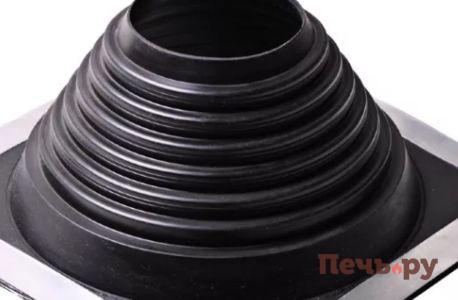

Types of rats, taking into account the material of manufacture
Today, the manufacturer offers products made of silicone and EDPM rubber on the market.
Silicone can withstand temperatures up to 315 ° and is much more elastic than rubber products. Its main disadvantage is its short service life due to its low resistance to UV radiation.
Rubber products are more durable, but may melt at 135 ° or 185 ° depending on the type of rubber used.
The diameter of the bowl must be chosen so that when the wind gusts, the plate does not sway during the sinking.
Installing the seal
Installing Master Flash is a fairly simple process. This was discussed above. But, there are some nuances that you need to know about.
On a flexible basis
Seals with a flexible base are used on metal roofs.
Installation process:
- It is necessary to choose a location for the cut. We must not forget that it should be 20 percent narrower than the diameter of the chimney.
- This requires roofing shears. Try to keep the section to be cut straight.
- The surface of the chimney must be moistened. Then, pull the seal over the pipe.
- Once installed on the roof, draw a line around the edges of the base.
- The adhesive is applied by lifting the sealant.
- Press down.
- Apply sealant to all required areas.


You need to choose an adhesive based on the type of roof covering.
Master Flush with Hard Snap
The gaskets, which have aluminum strips at the edges, are installed in the same way as described above. There is only one difference. Before installation, the base must be profiled to ensure a snug fit to the roof. To install them, you need hex screws. The mount is screwed to the very bottom of the profile.


Repair seal
Split roof gaskets are required when it is not possible to slide the insulation onto the pipe. They are usually used to repair obsolete chimney insulation.


Installation process:
- Powerful scissors need to cut off the top of the cone 20% less than the pipe diameter.
- Open the lock and wrap the chimney.
- Connect the cut of the seal and close the lock.
- Raise the edge of the base to apply the silicone sealant to the roof.
- Press down on everything and apply glue to the required areas and to the lock itself.


Installation on slate and roof tiles
For roofs made of tiles or slate, seals with an aluminum or lead flange are produced. Their cone is also cut off for a snug fit of the cuff to the pipe. The top of the metal base is brought under the roof, the bottom and side parts are laid on the roof. To prevent moisture from getting under it, it is necessary to bend the upper edge. At the end, you need to fill the problem joints with silicone.
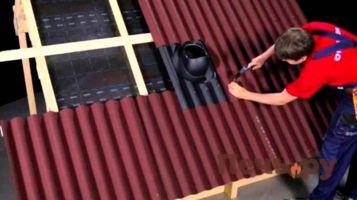

Pros and cons
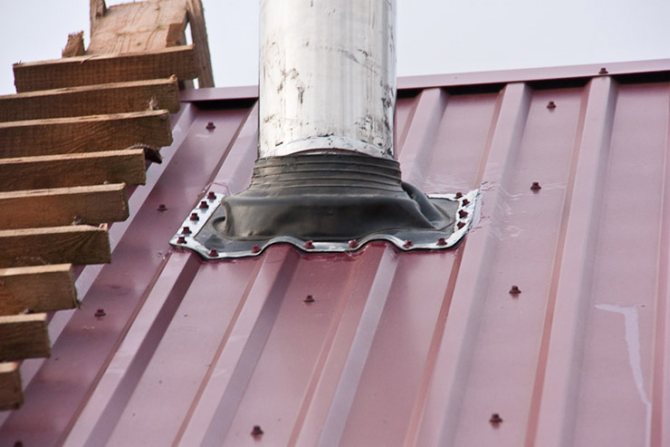

Master Flash has a number of advantages:
- Ease of installation. Indeed, here you do not need to have professional knowledge, this device can be mounted independently.
- Affordable price.
- Durability and resistance to high temperatures. The master flush is made of elastic materials, which gives it strength. In addition, it was said that silicone samples can withstand temperatures up to 300 degrees.
- Tightness. The roof cone tightly wraps around the chimney, while closing the hole tightly.
- Flexibility. Due to this quality, the roof can be mounted on any type of roof (pitched, straight, etc.), regardless of the type of roofing material (tiles, metal tiles, corrugated board, slate, etc.).
Among the downsides is the difficult process of installing a canopy on the ridge of the roof, but it is quite surmountable if done correctly.
Estimated cost
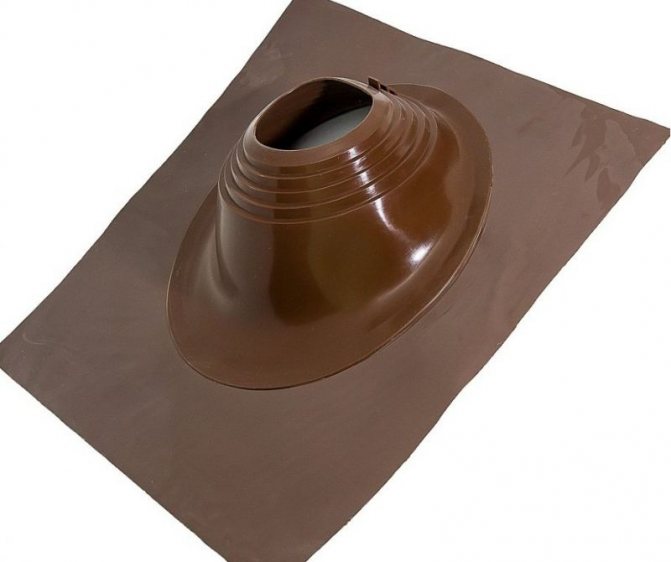

The cost of a master flush depends on what material it is made of. If the base is silicone, then such materials are more expensive than those based on rubber.
Prices for rats made of silicone range from 1,500 rubles to 3,500 rubles per piece. The price depends on the diameter as well as on the size of the material.
Prices for rubber rats fluctuate on average from 255 rubles to 600 rubles per month.
That's all! As you can see, Master Flash is an inexpensive material. It should be remembered that if everything is done in accordance with the rules, then the gap will be hermetically closed, which in the future will prevent water from entering under the roof.
Also, when working at height, one should not forget about safety rules.
Tricks when mounting a rat
- to make it easier to thread the pipe through the rat, lubricate them with a solution of soap.
- master flush, the hole in which was cut incorrectly, you can try to use it, clasping it with a tight clamp;
- the sealant for the penetration must have not only thermal properties, but also waterproofing;
- you need a minimum number of self-tapping screws to strengthen the product on the roof, since with long-term service and the loss of the waterproof properties of the sealant, moisture will seep through the slots.
Tags: fix, master, flush, slate
«Previous post
Device characteristic
Today builders use master flash for roof penetration. It is a universal sealant for sealing roof aisle. It is permissible to use it on coverings made of corrugated board, tin, ondulin or metal tiles.
The device is installed on ordinary metal roofs or equipped with tiles made of sand-cement raw materials. Fiber cement sheets, bitumen slabs, slate and other materials allow the installation of Master Flash. The system can be installed at any time of the year and in all weather conditions.
In this video you will learn how to mount an otter: Seals are used for flat and pitched roofs, both with and without a profile section. The product has obvious advantages:
- Elasticity. This quality allows the system to fit snugly against the walls of the chimney.
- Resistant to temperature fluctuations.
- Oxidation resistance.
- Tightness.
- Resistant to fire.
- The ability to take the initial shape after thermal expansion.
Manufacturers provide a product warranty for up to 30 years. Fastening is carried out without the use of special tools. The elasticity of the design allows you to reduce the consumption of raw materials when installing a chimney. The penetration does not require additional waterproofing.
Terms of Use
Elastic system Master Flash is suitable for waterproofing works in places where the chimney exits through the roof.
Experts advise using such a sealing system for the following heating systems:
- Chimney sandwiches. Such chimneys are pipes made of galvanized metal with a heat-insulating layer of basalt material. Thus, a rubber seal allows you to maintain an optimal temperature inside such a chimney and does not let heat out of the house;
- Chimneys made of stainless material. Such flue systems can be heated to high temperatures, therefore, it is effective to use a silicone seal for them. Silicone does not deform at high temperatures. Rubber models can only be used with a condenser type gas boiler.
When sealing uninsulated pipes with the Master Flush system, it is considered advisable to use a special sleeve. For this, a strip of 500 mm is cut from the tube. The chimney outlet is tightly wrapped with fire-resistant material and a sleeve is put on it, which is fixed with a steel clamp.

